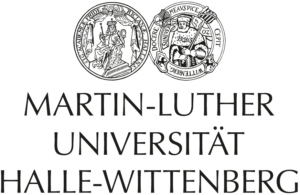Effect of chemical modification on crystal structure of Polydiketopyrrolopyrrole Copolymers
by Robert Kahl
and
Dynamics and Charge Transport of individualized polymer chains
by Alaa Hassan
chair: Louis
hybrid seminar: von-Seckendorff-Platz 1, room 5.10 + zoom
date: September 20, 15.00
Abstracts
Effect of chemical modification on crystal structure of Polydiketopyrrolopyrrole Copolymers
by Robert Kahl
Polydiketopyrrolopyrrole (PDPP) copolymers are promising materials for applications in organic solar cells and transistors. Their chemical structure offers many possibilities for modifications, allowing to adjust their optoelectronic properties according to the desired application. We investigated the molecular ordering and thermal properties in bulk (WAXS, DSC, TGA) and in thin films (GIWAXS, AFM) of three exemplary PDPPs, two donor polymers: PDPP[T]2 with thiophene flanking units and PDPP[T]2-{DEG} with thiophene flanking units and an additional OEG side chain, and one acceptor polymer: PDPP[Py]2 with pyridine flanking units. In the ordered state, all three PDPPs show regular π-π-stacked backbones (d020 = 3.7 – 3.9 Å) and a regular layered structure of demixed backbones and side chains (d100 = 18.7 – 19.1 Å). While PDPP[T]2 and PDPP[T]2-{DEG} only have sanidic liquid crystalline order, PDPP[Py]2 has a complex triclinic structure. PDPP[T]2-{DEG} has the lowest melting temperature and PDPP[Py]2 the poorest thermal stability of the three. These results demonstrate the significant influence of seemingly small chemical modifications on crystal structure and thermal properties of PDPPs.
Dynamics and Charge Transport of individualized polymer chains
by Alaa Hassan
Detailed insight into the dynamics and other functionalities of synthetic polymers on the molecular level is highly desired in advancing nano-technology; however, often, it can be technically challenging. We investigate the dynamics in individualized polymeric chains by employing broadband dielectric spectroscopy (BDS). This method revealed altered dynamics under conditions of spatial confinement in the past; however, there is no detailed information about the extent to which the material properties change due to individualizing the polymer chains. To address samples of such a small scale, nano-dielectric spectroscopy is developed by refining a nanostructured electrode setup combined with a procedure of chemical surface modification. The latter involves depositing a very regular pattern of gold nanoparticles (AuNPs) of well-controllable size and separation on the nanometer scale. These AuNPs act as anchors for the chemical grafting of end-functionalized polymers (e.g., thiol terminated PEO). To determine the (average) number and conformation of chains grafted to each AuNP, we use AFM to characterize their volume and shape.




